DP basics (by IIDXDP)
DP Beginner
This is a translation of iidxdp’s article, originally written in Korean. Translation by Horie.
Table of contents
Introduction
(TL note: I recommend that you read basic finger placements article first, before reading this article.)
This article is for players getting into DP for the first time.
Some players recommend starting out with DBM (double battle mirror) but it is controversial; SP patterns are more difficult than I imagined for battle mode, so I don’t think it is a good introduction to DP. Instead, in this article, I will explain how you can play low level DP charts to learn the basics of note recognition.
Note recognition
In games like IIDX DP and BMS DP (14 keys) – and even EZ2AC (10 key mode) – each player has their own way of recognizing notes in a game mode with many lanes.
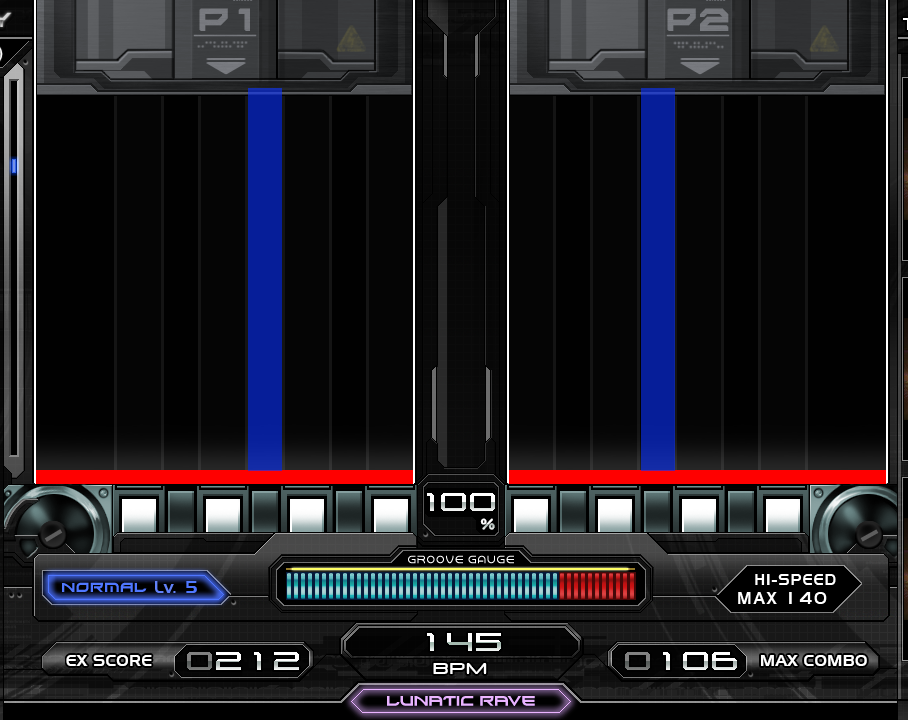
The method I use is based on where the notes fall relative to the middle lane, which would be button 4 on both sides. Based on that, I recognize notes as either being close to the center, or away from the center.
Finding your own comfortable method of recognizing notes is a fundamental skill.
Common patterns in low level charts
In beginner and normal charts, notes are commonly spread across 14 melodic scales, or bass (kick) notes tend to fall in the same lane.
Stairs and repeated bass patterns

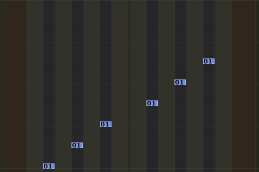
Above: stairs consisting of only white keys, or only black keys.
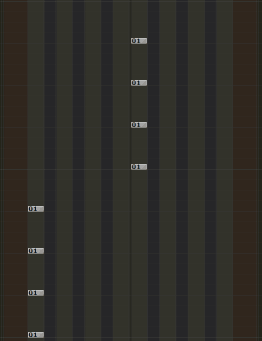
Above: repeated bass notes on 1st lane of each hand.
These patterns are similar to low level charts in SP mode, of course; however, notes will be more spread out since DP has more keys.
Simple chords
Largely, there are two types of simple chord patterns in DP.

Above image shows single-colored chords on 1p side, and mixed-color chords on 2p side.
Let me explain with respect to your left hand (leftmost key is #1):
For single colored chords, use 1357 / 246 pattern.
- 1 / 3 / 5 / 7. - Pinky / Ring / Index / Thumb
- 2 / 4 / 6 - Ring / Middle / Index
Mixed color chords are the way more complex. For instance,
- 1 / 4 - Pinky / Middle
- 2 / 5 - Ring (or Middle) / Index (or Thumb)
- 3 / 6 - Ring (or Middle) / Index
- 4 / 7 - Middle / Thumb
Complex chords

Above image shows more advanced form of chords, but the same idea; 1p side shows single-colored chords, 2p side is mixed.

If bass kicks are combined with chords, it looks like this (in this case, bass is on thumb of each hand).
If you have difficulties with mixed chords like these…
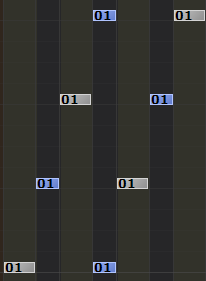
then imagine hitting these instead:
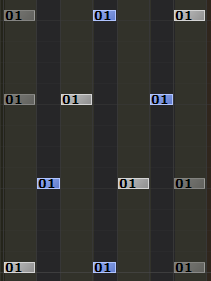
don’t actually hit the “ghost” notes, of course.

Combining everything together, it may go like this. Things like this won’t be seen until level 8, so don’t worry.
Examples
To illustrate, I will provide a few examples.
Element of SPADA (9): https://youtu.be/bhSYc21MlgE
POINT ZERO DPH (7): https://youtu.be/3zpx3LKyvyY
Mind Mapping DPA (8): https://youtu.be/QmXL6jbdX14
Here is a good example from Mind Mapping, showing single-color chords.
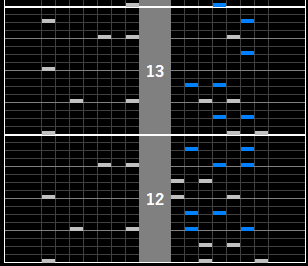
Closing remarks
Higher level charts will demand that you “reset” your fingers to the initial position many times throughout the song. Remember, your fingers should come back to be ready to hit the next set of notes. It will put less burden on your fingers.
